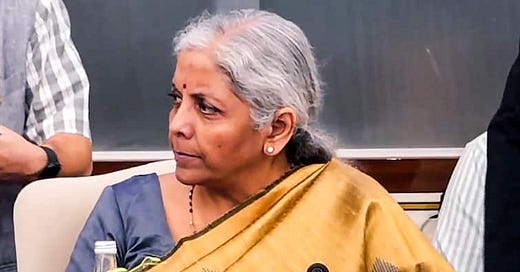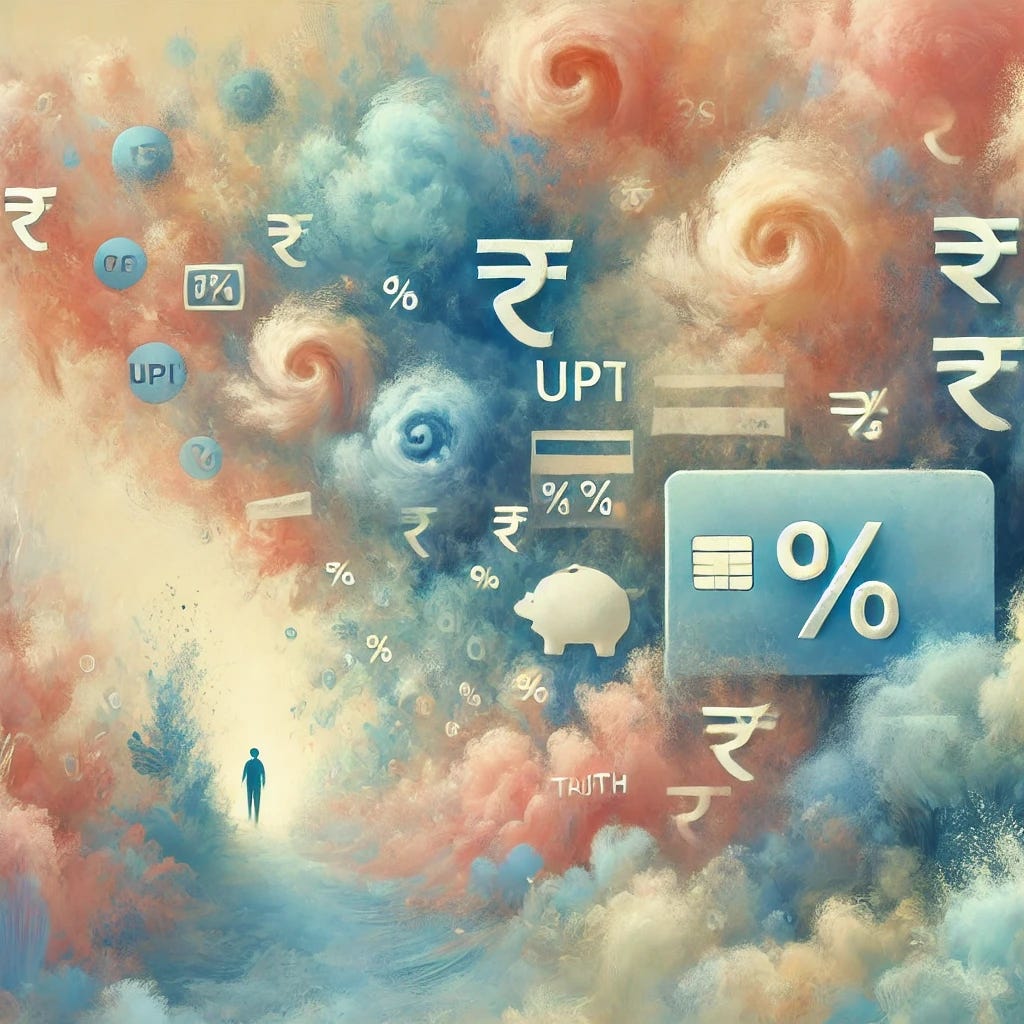Debunking Myths About the 18% GST on Small Digital Transactions: Unpacking the Truth
The Finance Ministry mandarins have let the Finance Minister down by failing to explain the matter clearly and in a way that the layman can easily understand.
18% GST on Small Digital Transactions?
Since yesterday, a narrative has been building around the idea that the GST Council is actively considering imposing an 18% Goods and Services Tax (GST) on all small digital transactions, particularly those under ₹2000. This has sparked widespread concern, with critics claiming such a move would be anti-poor, anti-small business, and could push India back towards a cash-based economy. However, this interpretation is both misleading and incorrect.
In this brief article, we will delve into the facts and dispel the myths surrounding this issue, created by the mainstream as well as the social media.
The Actual Proposal
The GST Council is not proposing an 18% tax on every small digital transaction. Instead, what is under consideration is the application of an 18% GST on the service fees charged by payment aggregators (PAs) for processing small-value transactions (up to ₹2000) conducted via debit and credit cards. This crucial distinction has been lost amid sensational reporting and social media frenzy.
Key Points to Understand
Not a New Tax on Consumers: The proposed GST would be applied on the service fees charged by payment aggregators, not the transaction amount itself. This means that consumers won’t suddenly see an 18% hike in their overall expenses.
Limited Scope: The proposal targets only debit and credit card transactions. Importantly, Unified Payments Interface (UPI) transactions—which constitute over 80% of India's retail digital payments—are not affected by this proposal.
Closing a Tax Loophole: Currently, payment aggregators enjoy an exemption from GST on small transactions below ₹2000. The proposal aims to bring uniformity in taxation by extending the GST to these service fees, ensuring a level playing field in the digital payment landscape.
Minimal Impact on Small Businesses: For instance, on a ₹1000 transaction with a 1% payment gateway fee, the additional cost would only amount to ₹1.80 (18% of ₹10). This is a negligible amount for most businesses and is unlikely to make a significant difference in their operational costs.
Debunking the Myths
Myth 1: The GST is Anti-Poor
Reality: The proposed GST does not affect UPI transactions, which are most commonly used by lower-income groups for small payments. Moreover, the impact on transactions via debit and credit cards—more often used by middle- and upper-income groups—is minimal.
Myth 2: It Will Push India Back to a Cash Economy
Reality: Since UPI transactions are not subject to this GST proposal, and they remain a zero-cost option for both consumers and merchants, the system actually encourages the continued use of digital payments. Far from promoting a return to cash, this ensures digital payments remain accessible and widespread.
Myth 3: The GST Will Hurt Small Businesses
Reality: The financial impact on small businesses is negligible. Small-value, high-frequency transactions are often processed via UPI, which remains exempt from this charge. Even in card transactions, the added cost is so minimal that it can easily be absorbed by the business or passed on to the consumer without causing significant disruptions.
Examples and Comparisons
To further illustrate how minimal the impact would be, consider the following:
Restaurant Bill: On a ₹500 restaurant bill paid by card, the additional cost due to this GST would be less than 10 paise.
Online Shopping: A ₹1500 purchase made through an e-commerce platform using a debit card would see a rise in cost of just around 27 paise.
Taxi Ride: For a ₹200 cab ride paid with a card, the increase in cost would be only 4 paise.
These examples demonstrate that the practical impact of the GST on payment aggregator fees is virtually negligible, particularly for small-value transactions.
The Bigger Picture
The GST Council’s proposal is part of a broader initiative to streamline the tax regime, ensuring uniformity and fairness across various sectors, including the digital economy. The move to tax payment aggregator fees is not a drastic new tax burden, but rather an effort to close existing loopholes that exempt certain transactions from GST.
It is important to remember that as India moves towards a more digitised and cashless economy, the tax system must evolve to match the growth of new payment methods. UPI has become a lifeline for millions of Indians, and by keeping it outside the scope of this proposal, the government has ensured that its use remains cost-effective and accessible.
In Summary
The narrative against the proposed 18% GST on payment aggregator fees for small transactions is built on a fundamental misunderstanding of the facts. Far from being an anti-poor or anti-small business measure, this proposal is a step towards a more consistent and equitable taxation system for the digital economy. By encouraging UPI for small transactions and bringing card-based transactions under a standardised tax structure, the proposal aligns with India’s vision of a transparent and efficient economy.
Finance Ministry Mandarins have let down the FM
Unfortunately, the mandarins of the Finance Ministry have not yet adequately communicated the details of this proposal to dispel the prevalent myths. It is left to the informed voices like “The KBS Chronicle” to clarify the facts for the public. We welcome comments, questions, or even counter-arguments from those who hold a different view. Together, through informed debate, we can move towards a clearer understanding of how India’s digital payment ecosystem can continue to grow and thrive.
Let the discussion and debate generate more light than heat.







…..Great clarification about GST. Such subject raised in Chronicle raises the intellectual level of Chronicle itself…!!